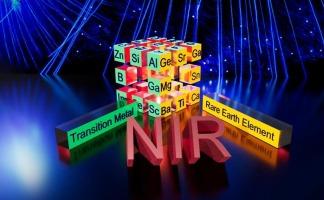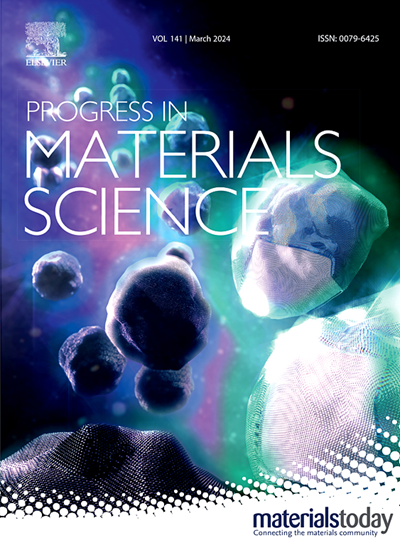Revolutionary near-infrared phosphors with emerging structures and mechanisms driving next-generation applications
IF 40
1区 材料科学
Q1 MATERIALS SCIENCE, MULTIDISCIPLINARY
引用次数: 0
Abstract
Near-infrared (NIR) phosphors have emerged as critical components for next-generation optoelectronic devices, spanning biological windows NIR-I (650–950 nm), NIR-II (1000–1350 nm), and NIR-III (1500–1850 nm). This review aims to provide the evolution of NIR phosphor structures, luminescence mechanisms, and applications from fundamental crystal field theory to cutting-edge intervalence charge transfer processes. We systematically analyze activator systems including rare earth elements and transition metals, elucidating structure–property relationships through site engineering, cation substitution, and energy transfer mechanisms. Recent breakthroughs achieving high internal quantum efficiency and broadband emission demonstrate remarkable progress, especially in the NIR-II phosphor research field. Applications encompass plant growth lighting, artificial intelligence image recognition, spectroscopic analysis, and optical communication. Machine learning-accelerated discovery approaches now enable good prediction accuracy for new phosphor systems. This review provides design principles for high-performance NIR phosphors while identifying future opportunities in high-power laser diode light sources and biomedical applications, establishing a roadmap for next-generation NIR phosphor materials.

革命性的近红外荧光粉,具有新兴的结构和机制,推动下一代应用
近红外(NIR)荧光粉已成为下一代光电器件的关键组件,涵盖生物窗口NIR- i(650-950 nm), NIR- ii(1000-1350 nm)和NIR- iii(1500-1850 nm)。本文综述了近红外荧光粉结构的演变、发光机制以及从基本晶体场理论到最新价间电荷转移过程的应用。我们系统地分析了包括稀土元素和过渡金属在内的激活剂体系,通过现场工程、阳离子取代和能量转移机制来阐明结构-性能关系。近年来在实现高内量子效率和宽带发射方面的突破,特别是在NIR-II荧光粉研究领域取得了显著进展。应用领域包括植物生长照明、人工智能图像识别、光谱分析和光通信。机器学习加速发现方法现在可以为新的荧光粉系统提供良好的预测精度。本综述提供了高性能近红外荧光粉的设计原则,同时确定了高功率激光二极管光源和生物医学应用的未来机会,并建立了下一代近红外荧光粉材料的路线图。
本文章由计算机程序翻译,如有差异,请以英文原文为准。
求助全文
约1分钟内获得全文
求助全文
来源期刊

Progress in Materials Science
工程技术-材料科学:综合
CiteScore
59.60
自引率
0.80%
发文量
101
审稿时长
11.4 months
期刊介绍:
Progress in Materials Science is a journal that publishes authoritative and critical reviews of recent advances in the science of materials. The focus of the journal is on the fundamental aspects of materials science, particularly those concerning microstructure and nanostructure and their relationship to properties. Emphasis is also placed on the thermodynamics, kinetics, mechanisms, and modeling of processes within materials, as well as the understanding of material properties in engineering and other applications.
The journal welcomes reviews from authors who are active leaders in the field of materials science and have a strong scientific track record. Materials of interest include metallic, ceramic, polymeric, biological, medical, and composite materials in all forms.
Manuscripts submitted to Progress in Materials Science are generally longer than those found in other research journals. While the focus is on invited reviews, interested authors may submit a proposal for consideration. Non-invited manuscripts are required to be preceded by the submission of a proposal. Authors publishing in Progress in Materials Science have the option to publish their research via subscription or open access. Open access publication requires the author or research funder to meet a publication fee (APC).
Abstracting and indexing services for Progress in Materials Science include Current Contents, Science Citation Index Expanded, Materials Science Citation Index, Chemical Abstracts, Engineering Index, INSPEC, and Scopus.
 求助内容:
求助内容: 应助结果提醒方式:
应助结果提醒方式:


